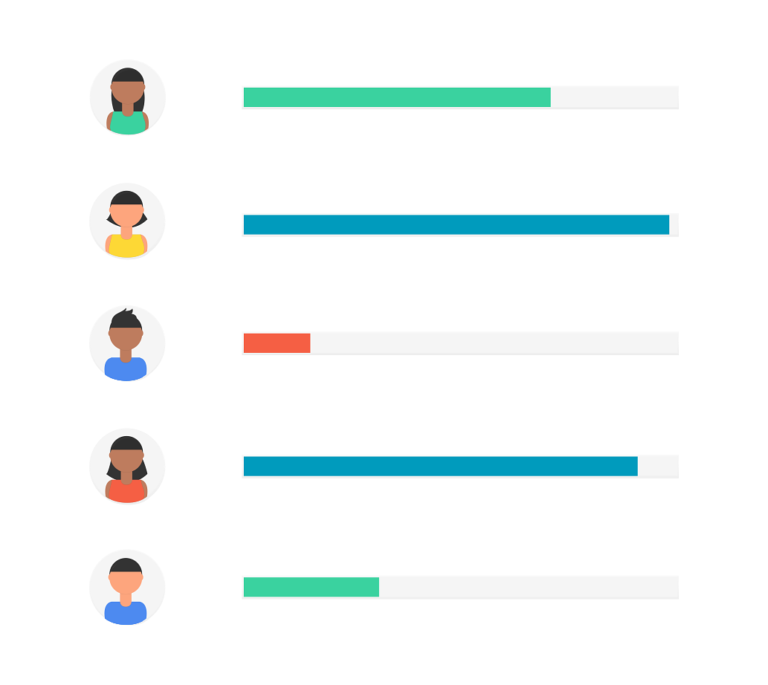Which exam types do academic institutions use?

This is the first of two chapters about Exam Types. To complete this reader, read each chapter carefully and then unlock and complete our materials to check your understanding.
– Discuss the concept of using exams in academic settings
– Introduce the skills tested and formats used during exams
– Outline the eleven different types of exam used to test students at academic institutions
Before you begin reading...
-
video and audio texts
-
knowledge checks and quizzes
-
skills practices, tasks and assignments
Chapter 1
Unless you’ve joined an extremely progressive university, there’s a strong likelihood that as a student you’ll have to very quickly become familiar with examinations in order to complete your degree. It’s true that most students should be quite used to being examined by this point, having completed multiple forms of tests on multiple occasions throughout their primary and secondary education. However, how tests are conducted at the tertiary level might be somewhat different to what students are used to, often with more challenging content, higher stakes and stricter rules.
This short reader on exam types is therefore intended to introduce students to the many different formats of examination that might be encountered during a bachelor’s or master’s degree. Chapter 1 discusses the reasoning behind these exams and outlines the most common skills that are assessed, the possible exam formats that may be used, and the many different types of exam that could be completed. Chapter 2 then explores the pros and cons of each of these types.
Why do universities use exams?
You might be wondering as a student why you need to be assessed during university at all, and some professors might agree with you. However, the general reasoning for continuing to use examinations at the university level are threefold: (1) so that students are aware of their progress and competitiveness within their cohort, (2) so that tutors and administrators can judge whether or not to enact a student’s requests, such as by changing subject major, and (3) so that employers can distinguish applicants when conducting job interviews. Ultimately, examinations are used to distinguish students by their level, skill, aptitude and proficiency.

Which skills are tested during exams?
A test or examination (also known more informally as an ‘exam’) is a type of assessment that’s conducted over a short period of time in a controlled setting and that’s intended to determine the level, progress or skill of the test-taker. While different examination types are used to test different skills, in truth there are only a limited number of core skills that an exam is able to evaluate: listening, speaking, reading and writing. In addition to these four, examinations are also able to more broadly test a student’s aptitude (general ability), critical thinking, general knowledge, logical deduction, memorisation and ability to solve problems.
What are the most common exam formats?
How exams are conducted by universities – their format – is fairly predictable. This is because exams must be (a) formal, so that students and tutors take them seriously, (b) standardised, to ensure quality and fairness, and (c) conducted in a controlled environment to ensure consistency and to deter cheating. With these factors in mind, it’s clear to see why the following four formats are the only possible styles of exam that university students will encounter:
- In-Class Exams: These are the types of exams which are conducted during class time, making this format less formal in nature. In-class examinations are commonly used for mock (practice) exams, presentations, or with placement tests conducted at the beginning of the semester or academic year.
- Invigilated Exams: Extremely formal in nature, these exams are carefully monitored by university staff and are usually conducted in large rooms such as sports halls or auditoriums. Here, students will be required to follow strict rules such as displaying ID, sitting in dedicated seats and having clear pencil cases.
- Online Exams: Most usually conducted in a computer room on campus or in the student’s private residence, online exams require the assistance of a computer to complete and are therefore the least common exam format.
- Takeaway Exams: Also infrequently used – but no less stressful for the student – are takeaway exams. In this format, students are provided with the materials that they will need to complete a longer assessed task at home. Such takeaway papers are usually between 24 and 48 hours in length.
What are the different types of exam?
The following eleven exam types will be explored in much more detail in the upcoming chapter:

Having introduced the basic concepts of examinations, consider studying further with Academic Marker to find out more about these eleven exam types.
To reference this reader:
Academic Marker (2022) Exam Types. Available at: https://academicmarker.com/academic-guidance/examinations/exam-types/ (Accessed: Date Month Year).
Downloadables
Once you’ve completed both chapters in this short reader about Exam Types, you might then wish to download our Chapter Worksheets to check your progress or print for your students. These professional PDF worksheets can be easily accessed for only a few Academic Marks.
Chapter 1 explores the topic: Which exam types do academic institutions use? Our Chapter 1 Worksheet (containing guidance, activities and answer keys) can be accessed here at the click of a button.
Chapter 2 explores the topic: What are the pros and cons of the 11 exam types? Our Chapter 2 Worksheet (containing guidance, activities and answer keys) can be accessed here at the click of a button.
To save yourself 1 Mark, click on the button below to gain unlimited access to all of our Exam Types Chapter Worksheets. This All-in-1 Pack includes every chapter, activity and answer key related to this topic in one handy and professional PDF.
Collect Academic Marks
-
100 Marks for joining
-
25 Marks for daily e-learning
-
100-200 for feedback/testimonials
-
100-500 for referring your colleages/friends